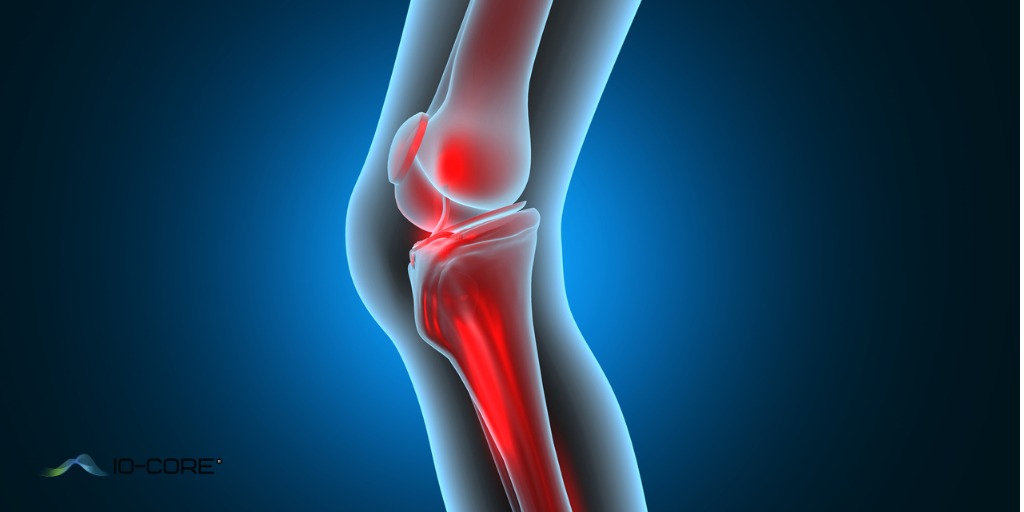What Is Joint Space Narrowing?

Fast Facts On Joint Space Narrowing:
- Age Group: Most common in older adults aged 55 and older
- Gender: Affects more women than men
- Cause: Aging; wear and tear
- Primary Symptoms: Joint pain and loss of range of motion
- Prognosis: Joint space narrowing is incurable, but symptoms can be managed with treatment
What Is Joint Space Narrowing?
Joint space narrowing occurs when the space between two bones that form a joint narrows. Healthy joints maintain the distance between bones through the thick, rubbery layer of cartilage that covers and protects the ends of bones. Joint cartilage cushions the bones, absorbs shock and pressure, and allows joints to move smoothly and flexibly.
When cartilage wears away, the bones rub against each other, which causes joint pain, swelling, inflammation and loss of range of motion. This condition is called bone-on-bone.
Causes and Risk Factors
The following conditions can lead to joint space narrowing:
- Age. Natural wear and tear over the years causes cartilage degeneration and narrowing of the space between joints.
- Injury. Acute joint injury from a traumatic event like a car accident, tendon tear or sports accident can cause permanent joint damage and degeneration. Long-term joint injuries from overuse and repetitive movements can also cause gradual joint damage and degeneration.
- Obesity. Obesity places excess stress and pressure on the joints, which can damage them.
In many cases, joint space narrowing is an early indication of arthritis. Cartilage loss is one of the primary signs of osteoarthritis (OA), a degenerative form of arthritis caused by wear and tear over time. Joint space narrowing could also indicate early rheumatoid arthritis (RA), the most common type of inflammatory arthritis.
Symptoms
The primary symptoms of joint space narrowing are:
- Joint pain
- Stiffness
- Loss of joint range of motion
Diagnosis
See your doctor if you experience joint pain or difficulty moving a joint. Joint space narrowing is identifiable and measurable in an imaging study like an X-ray. Once narrowing is identified, your doctor will perform further tests to try to determine the cause of joint space narrowing.
To determine if narrowing is caused by arthritis, your doctor will take a physical exam to test your joint for flexibility and range of motion. Additionally, he or she will examine imaging scans for other signs that indicate arthritis, including bone spurs, bone cysts, bone sclerosis and cartilage loss. Your doctor may also take blood or joint fluid samples to test for inflammatory markers that indicate RA or another form of inflammatory arthritis.
Treatment Options
Treatment options may vary depending on the cause of joint space narrowing. The primary goal of treatment is to reduce pain and retain joint functionality. While joint space narrowing can’t be cured, active management can help you maintain a high quality of life.
Medications
1.) Over-the-counter painkillers can help relieve mild to moderate joint pain.
2.) Over-the-counter NSAIDs can help relieve joint pain and inflammation.
3.) Anti-Inflammatory drugs like DMARDs and biologic response modifiers may be prescribed if joint space narrowing is caused by RA. These medications suppress immune system functions that lead to pain and inflammation.
4.) Corticosteroids can help relieve pain and inflammation. They can be prescribed as an oral medication or an injection.
Viscosupplementation
Viscosupplementation is a procedure that involves injecting a gel-like fluid called hyaluronic acid directly into the affected joint. Hyaluronic acid has lubricating properties that can help reduce pain and friction within the joint.
Physical Therapy and Exercises
Physical therapy exercises can help joints maintain their flexibility and full range of motion, and improve strength and endurance in the surrounding muscles. Your doctor may recommend you engage in low-impact exercises and stretching like swimming, yoga, cycling and walking. Low-impact activities strengthen joints and muscles without placing as much stress on the joints.
Surgery
If you have severe pain that isn’t relieved by traditional treatments or a loss of mobility that’s affecting your quality of life, then surgery may be an option. If your joint space narrowing is caused by a form of arthritis like OA or RA, symptoms will likely progress and worsen over time, and you may require surgery in the future. Surgical options include joint repair, joint fusion or total joint replacement.
Prevention and Lifestyle Changes
Joint space narrowing isn’t preventable in many cases, especially if it’s an early indicator of arthritis. However, there are lifestyle changes you can make at home to maintain joint function, prevent damage and complete daily activities with less pain.
- Exercise. Regular exercise improves joint strength, mobility and flexibility. It also improves surrounding muscle strength. Incorporate different types of exercises into your routine. Bodyweight exercises can help you gain muscle strength, while low-impact exercises like walking and swimming can help you retain joint mobility and flexibility.
- Maintain a healthy weight. If you’re overweight, make healthy dietary and exercise changes to lose excess weight. Carrying around extra weight places more stress on your joints, especially weight-bearing joints in your knees and ankles.
- Protect your joints. Practice good posture and good body positioning when you sit, stand, bend and lift heavy loads. If you are part of a profession, hobby, sport or other activity that requires overuse or repetitive motion of one or more joints, rest frequently to reduce stress and pressure on the joint(s).
If you’ve been diagnosed with arthritis or joint damage and you suffer from pain, stiffness and difficulty walking, climbing stairs or performing daily activities, then the iO-Core™ procedure may be a viable treatment option for you. iO-Core combines orthopedics and biologics to treat degenerating cartilage and underlying bone and tissue damage caused by arthritis and other joint injuries. Treating the underlying damage and not just the surface layer of cartilage has shown better results in decreasing pain and improving mobility for many patients. Contact us today to see if you qualify for the iO-Core procedure.
